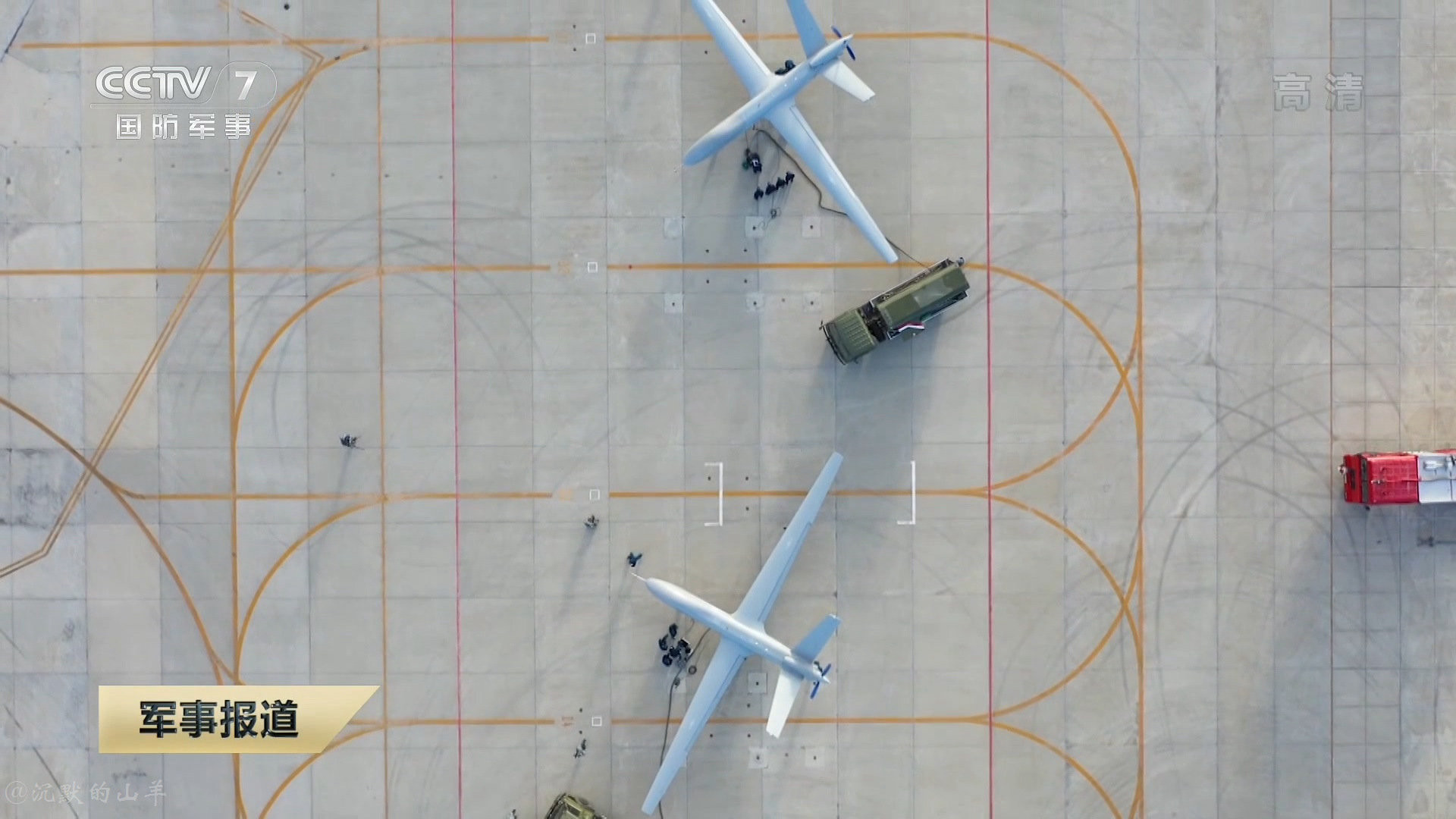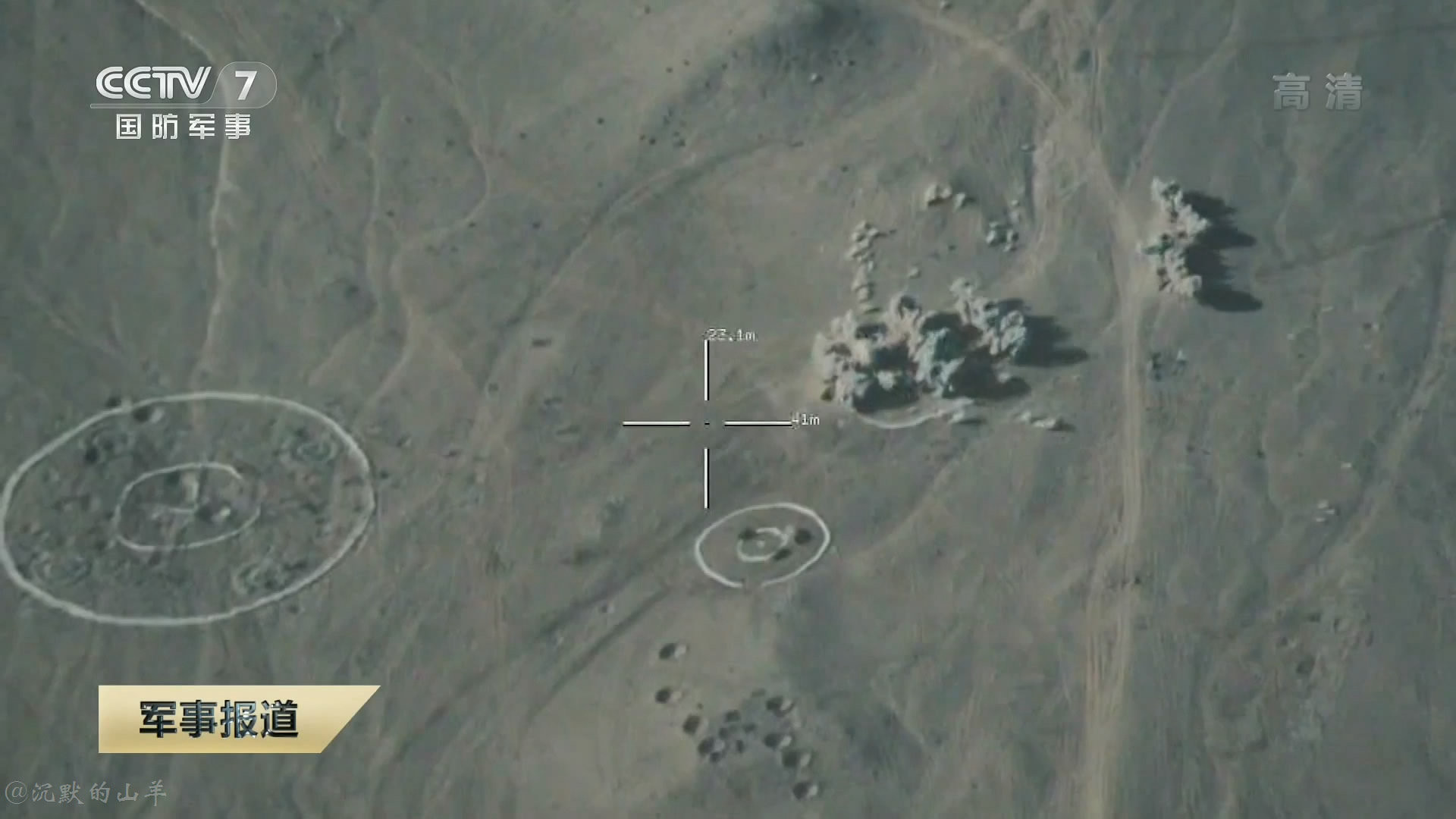Only birthday present Putin is wishing for . But he was too subborn to ask for kindly.
You are using an out of date browser. It may not display this or other websites correctly.
You should upgrade or use an alternative browser.
You should upgrade or use an alternative browser.
Chinese UAV/UCAV development
- Thread starter AssassinsMace
- Start date
- Status
- Not open for further replies.
I guess that means laser ranging in 20km then calculate absolute coordinate of target basing on position of the drone (btw some DJI can do that, amazing. LGB is out of date and should be replaced by iron bomb+simple datalink).
And laser designating in 13.5km.
The best DJI drone can only laser rang 1.2km. It's too small. And laser guided is still more accurate than GNSS/INS guided.
Only birthday present Putin is wishing for . But he was too subborn to ask for kindly.
More like China rejects to provide any offensive equipment. In my memory, in new century, China always rejects to provide weapon for war between two organizations that both officially recognized by Chinese government, which also cause the supply ability of Chinese weapon during a war is very unreliable.
The terrain in many places of China like Galwan are very difficult to resupply by road.I'm not sure drones will be useful for logistics, at least in high intensity campaigns against a near peer.
Witness the current war where hundreds, if not thousands of trucks are needed to maintain operations.
The Kamaz 4350 which is the Russian army's most common truck carries about four tonnes with a1016 tonne version available, IIRC.
In other words, almost triple the capacity of this drone.
Plus trucks can tow artillery, mortars and other vehicles.
Drones also enable supplies to be scaled down. it wouldn't be cost effective to resupply a single post daily by truck meaning munitions would need to be stockpiled close to the frontlines - a dangerous situation as we see in the Ukraine. But you could do it with drones.
At some point/size logistics UAVs will be about the same cost as a piloted aircraft, I feel like in most instances a bush plane would be cheaper to operate and more reliable in times of conflict.The terrain in many places of China like Galwan are very difficult to resupply by road.
Drones also enable supplies to be scaled down. it wouldn't be cost effective to resupply a single post daily by truck meaning munitions would need to be stockpiled close to the frontlines - a dangerous situation as we see in the Ukraine. But you could do it with drones.
I love bush planes. In a few years China will have passenger drones, this could be the modern equivalent.At some point/size logistics UAVs will be about the same cost as a piloted aircraft, I feel like in most instances a bush plane would be cheaper to operate and more reliable in times of conflict.
China’s next-gen solar-powered drone expected to make debut soon
UAV to act as quasi-satellite for recon, monitoring, communications relay missions
A CH-T4 large solar-powered drone carries out its first flight in 2017. Photo: Courtesy of China Academy of Aerospace Aerodynamics
China is expected to unveil its next-generation, solar-powered large unmanned aerial vehicle (UAV) with very long endurance soon, which will have a larger wingspan than its predecessors that allows it to carry larger payloads for missions including reconnaissance, monitoring and communications relay in near-space, said Chinese experts familiar with the matter on Monday.
The remarks came after the country's latest drone of this kind made its maiden flight earlier this month.
In 2017, China's first solar-powered large drone, the CH-T4 of the world-famous CH drone series, made its maiden flight, staying aloft for 15 hours at altitudes of more than 20,000 meters. This made China the third country to develop such an aircraft following the UK and the US.
Having a wingspan of around 45 meters, the CH-T4 has set a very high starting point for China's solar-powered drone development, with all core technologies and equipment being domestically made, a source familiar with the Chinese drone industry told the Global Times on condition of anonymity.
Earlier this month, the Qimingxing-50 solar-powered drone, developed by Aviation Industry Corporation of China (AVIC), made its maiden flight. It has a 50-meter-class wingspan and can also reach 20,000 meters in altitude.
The Qimingxing-50 is the first high-altitude low-speed drone with an ultrahigh aspect ratio developed by the AVIC, the first large drone to use a twin-fuselage configuration, and the first all-electric large UAV platform with solar energy as the only power source.
An even larger solar-powered drone, with a wingspan of over 60 meters, a service ceiling of more than 20,000 meters, an endurance of more than a month and a mission payload of 30 kilograms was unveiled by CH UAV company in its information material at Airshow China 2021, which was held in September in Zhuhai, South China's Guangdong Province.
Based on the general pattern and development cycle, China's new-type solar-powered drone, which has a larger wingspan and can carry larger payloads, could make its debut at the upcoming Airshow China 2022 in November, Fu Qianshao, a Chinese aviation expert, told the Global Times on Monday.
From the CH-T4 to the Qimingxing-50, then to the next-generation solar-powered drone, wingspans are getting larger and larger, expanding from 45 meters to 50 meters then to more than 60 meters.
A larger wingspan will allow the drone to carry more solar panels to provide sufficient electricity to support the extended flight, Fu said. Larger and more capable payloads also use more electricity, he pointed out.
As long as the electricity generated during the day is enough to support the drone's flight overnight, the drone can remain in the sky for months, Fu said.
Another reason to have a larger wingspan is that it will provide a higher lift-drag ratio for the aircraft, extending its endurance, the expert said.
The developers must have resolved issues related to structural strength so that a larger wing would not break, Fu said. "More advanced solar batteries will also be installed, which will also contribute to the power generation."
Other countries like the US have developed solar-powered drones, including NASA's Helios, which has a wingspan of about 75 meters, and Odysseus, which is a product of a Boeing subsidiary with a wingspan of 74 meters.
Generally speaking, China's development in solar-powered large UAVs can rival its foreign counterparts, Fu said.
Another expert who asked for anonymity told the Global Times that solar-powered drones can play very important roles in both military and civilian fields, including in missions like reconnaissance, surveillance, communications relay, forest firefighting and maritime monitoring.
Because such drones have the potential to stay in the air for months and even years at near-space altitudes, they can act as quasi-satellites, the expert said. They also have advantages over other types of aircraft.
Compared with satellites, solar-powered drones are more accurate, can theoretically remain in mission areas permanently and have lower operating costs.
Compared with traditional aircraft, solar-powered drones can cover larger areas and have longer endurance.
Compared with aerostatics, solar-powered drones are more maneuverable, the expert said. If needed, a fleet of solar-powered drones carrying different payloads can also be deployed to meet different mission requirements, he said.
Solar-powered drones can focus on a specific area for a long time, or they can conduct patrols over 2,000 or 3,000 kilometers. They can also be used jointly with satellites, which will yield even better results, the expert said.
When serving civilian purposes, like providing communications signals for remote regions, solar-powered drones are more cost-effective than setting up base stations on the ground. This method is even better than the US' Starlink satellites, the expert said.
An unconfirmed piece of news: the number of large UAVs equipped with pla is much smaller than expected, which means that if there is a real military conflict, we will not see dense UAVs appear in the sky.
The weibo claims that pla will not procure too many large UAVs due to the lack of sufficient asymmetric combat environment. Therefore, the number of large UAVs in pla is not so large that there is no need to deliberately keep the number secret.
An unconfirmed piece of news: the number of large UAVs equipped with pla is much smaller than expected, which means that if there is a real military conflict, we will not see dense UAVs appear in the sky.
The weibo claims that pla will not procure too many large UAVs due to the lack of sufficient asymmetric combat environment. Therefore, the number of large UAVs in pla is not so large that there is no need to deliberately keep the number secret.
A bit of a useless Weibo post even without considering whether the OP is anyone worth listening to -- what is the number of large UAVs in the PLA that people "expect"?? And what is the number they the OP is implying as what they think is in service??
Because my expectation for the number of PLA "large UAVs" (I assume they mean MALE UAVs like GJ-1/2 and other types such as CH family) is that they are still likely well below approaching three digits, for a reason.
Last edited:
An unconfirmed piece of news: the number of large UAVs equipped with pla is much smaller than expected, which means that if there is a real military conflict, we will not see dense UAVs appear in the sky.
The weibo claims that pla will not procure too many large UAVs due to the lack of sufficient asymmetric combat environment. Therefore, the number of large UAVs in pla is not so large that there is no need to deliberately keep the number secret.
This is a real piece of lol.
A random person claims PLA has very little UAVs in service. Then backs up the statement by saying if the PLA had a lot of UAVs then they wouldn't keep the number a secret ...
PLA has more types of UAVs in active service than India has units of UAVs in service just for a comparison of numbers. It would not be a surprise to anyone if PLA currently has more UAVs in service than any other force in the world (including the US). Let's see, the manufacturing and industrial output is greater, the costs are lower, every single component down to the chips are made in China and can be sourced locally (through multiple vendors and not just limited to one or a slight few). Labour costs are lower, energy costs are lower, raw materials China has the most in the world and the largest stockpile of ore and steel among other raw materials required for UAV manufacturing.
Nevermind that China is responsible for the vast majority of global commercial drones. Their development, design, manufacturing. In most cases, also their IP and patents.
- Status
- Not open for further replies.





